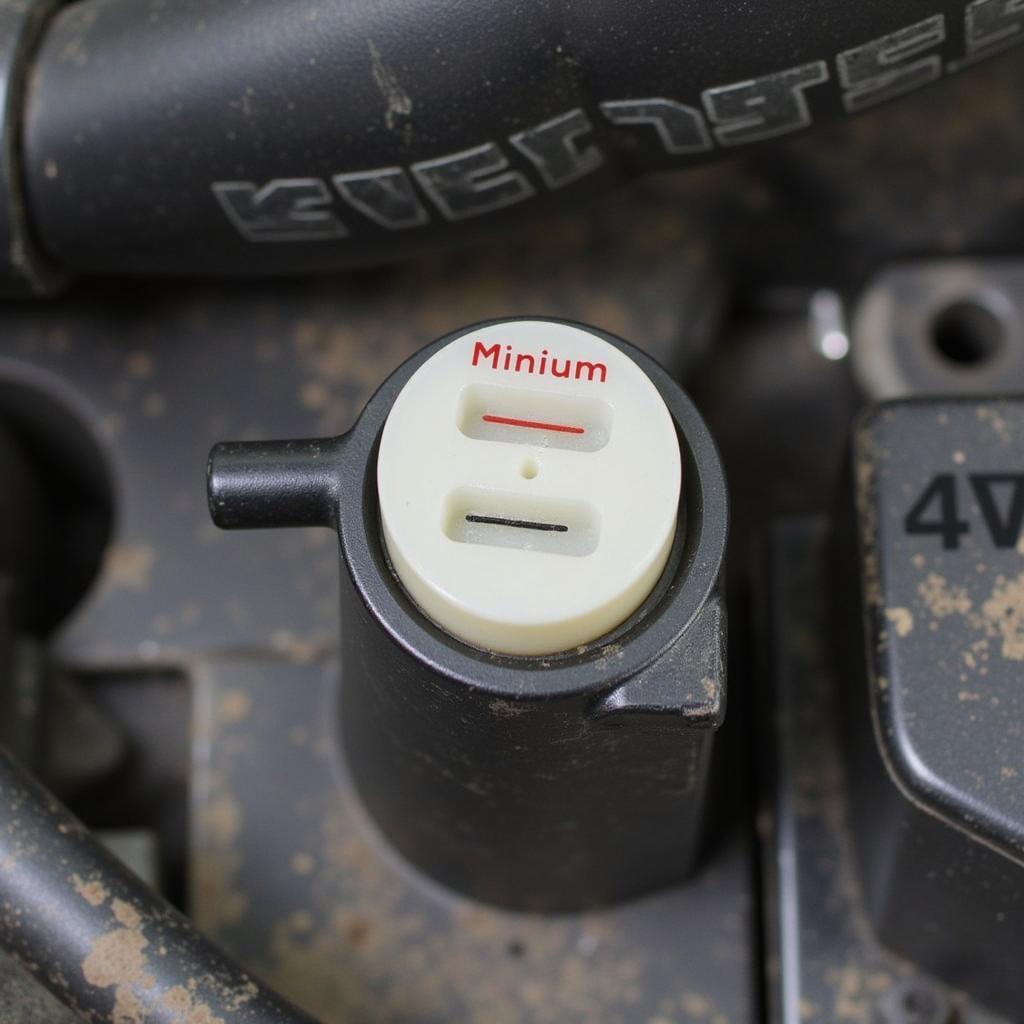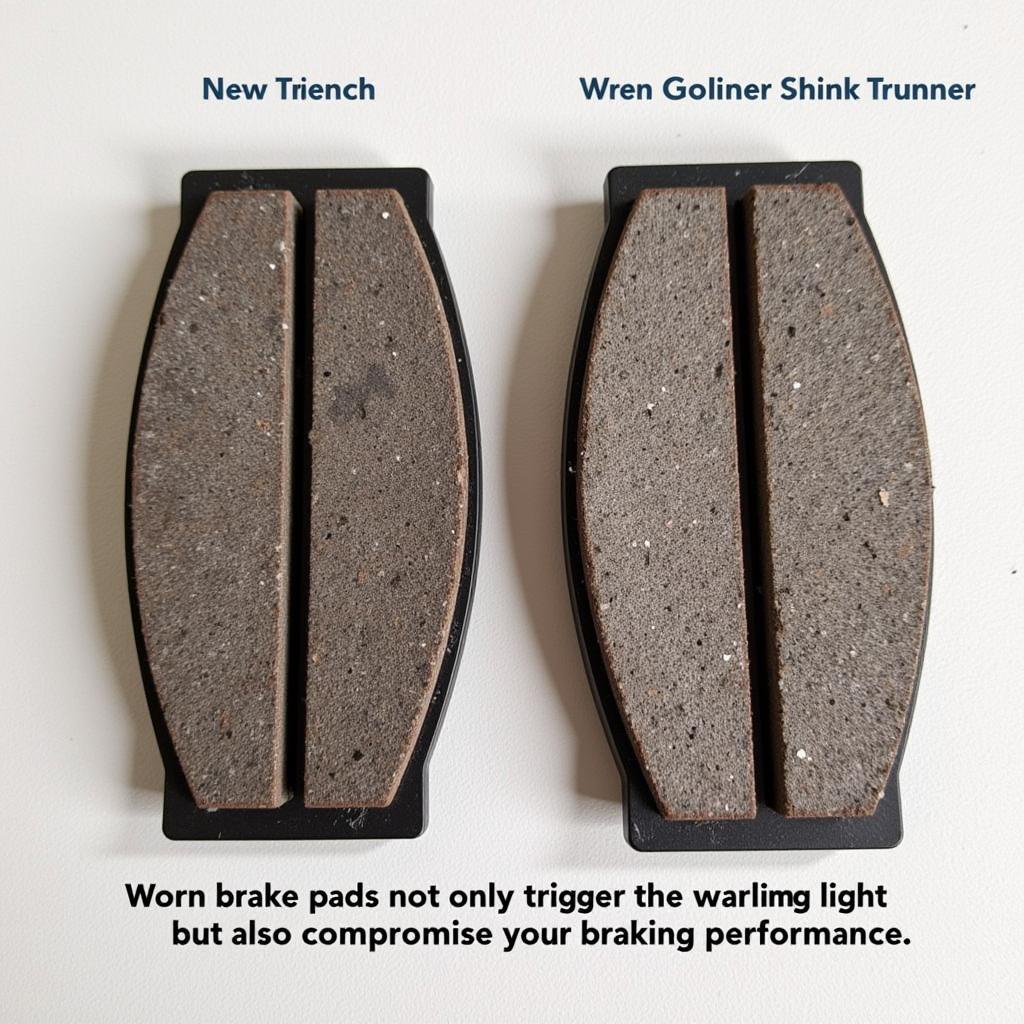The brake warning light on your dashboard is a critical safety feature, and when it illuminates on your 95 4Runner, it’s crucial not to ignore it. This light signals a potential issue within your braking system, and addressing it promptly can prevent accidents and ensure your safety on the road. While the most common cause is simply a low brake fluid level, several other factors can trigger this warning. Let’s dive into the potential causes and solutions for a 95 4Runner brake warning light.
Understanding Your 4Runner’s Brake Warning System
Your 4Runner utilizes a straightforward yet effective system to alert you of brake system issues. The warning light is connected to several components, including the brake fluid level sensor, parking brake lever, and the ABS control unit. When any of these components detect an anomaly, the warning light on your dashboard will illuminate.
Common Causes of a 95 4Runner Brake Warning Light
While a low brake fluid level is the most frequent culprit behind a glowing brake warning light, it’s essential to consider other potential causes to ensure you address the root of the problem. Here’s a breakdown of common issues that can trigger the brake warning light in your 95 4Runner:
-
Low Brake Fluid: The most common reason is low brake fluid, often indicating worn brake pads. Brake fluid diminishes as pads wear down, so it’s vital to check your fluid level and top it up if needed.
-
Worn Brake Pads: Thin brake pads can activate the warning light. It’s crucial to replace worn brake pads immediately to maintain optimal braking performance and safety.
-
Faulty Brake Caliper: A sticking or seized brake caliper can cause uneven brake pad wear and trigger the warning light. Inspect your calipers for signs of leakage or sticking and rebuild or replace them as needed.
-
Brake Fluid Leak: A leak in your brake lines, hoses, or cylinders can cause a sudden drop in brake fluid level and trigger the warning light. Carefully inspect all brake components for any signs of leaks and address them immediately.
-
Faulty ABS System: A malfunctioning Anti-lock Braking System (ABS) can also illuminate the brake warning light. If you suspect an ABS issue, it’s best to seek professional diagnostics to pinpoint the problem.
 Brake Fluid Reservoir
Brake Fluid Reservoir
Troubleshooting a 95 4Runner Brake Warning Light
-
Check Brake Fluid Level: Park your 4Runner on a level surface and inspect the brake fluid level in the master cylinder reservoir. If the fluid is below the “MIN” mark, carefully top it up with the recommended brake fluid type for your vehicle.
-
Inspect Brake Pads: Examine the thickness of your brake pads through the wheel spokes. If they appear thin or worn down to the metal backing plates, it’s time for a replacement.
-
Check for Leaks: Thoroughly inspect all brake lines, hoses, and connections for any signs of leaks, such as wet spots or drips. A brake fluid leak requires immediate attention, so consult a mechanic if you suspect one.
-
Examine Parking Brake Lever: Ensure the parking brake lever is fully released. Sometimes, an improperly disengaged parking brake can trigger the warning light.
 Worn Brake Pads
Worn Brake Pads
When to Seek Professional Help
While some brake warning light issues can be resolved with basic troubleshooting, it’s crucial to seek professional assistance if:
- You’re uncomfortable working on your vehicle’s brake system.
- You’ve checked the basics, and the light remains illuminated.
- You suspect an issue with your ABS system.
“Remember, your brakes are critical for your safety. If you’re unsure about any aspect of brake repair, always defer to a qualified mechanic.” – John Miller, Certified Automotive Technician.
Conclusion
Addressing a brake warning light on your 95 4Runner is not something to postpone. By understanding the common causes and performing some basic checks, you can often identify and address the issue promptly. However, if the problem persists or you suspect a more complex issue, always consult a qualified mechanic to ensure your safety on the road.


